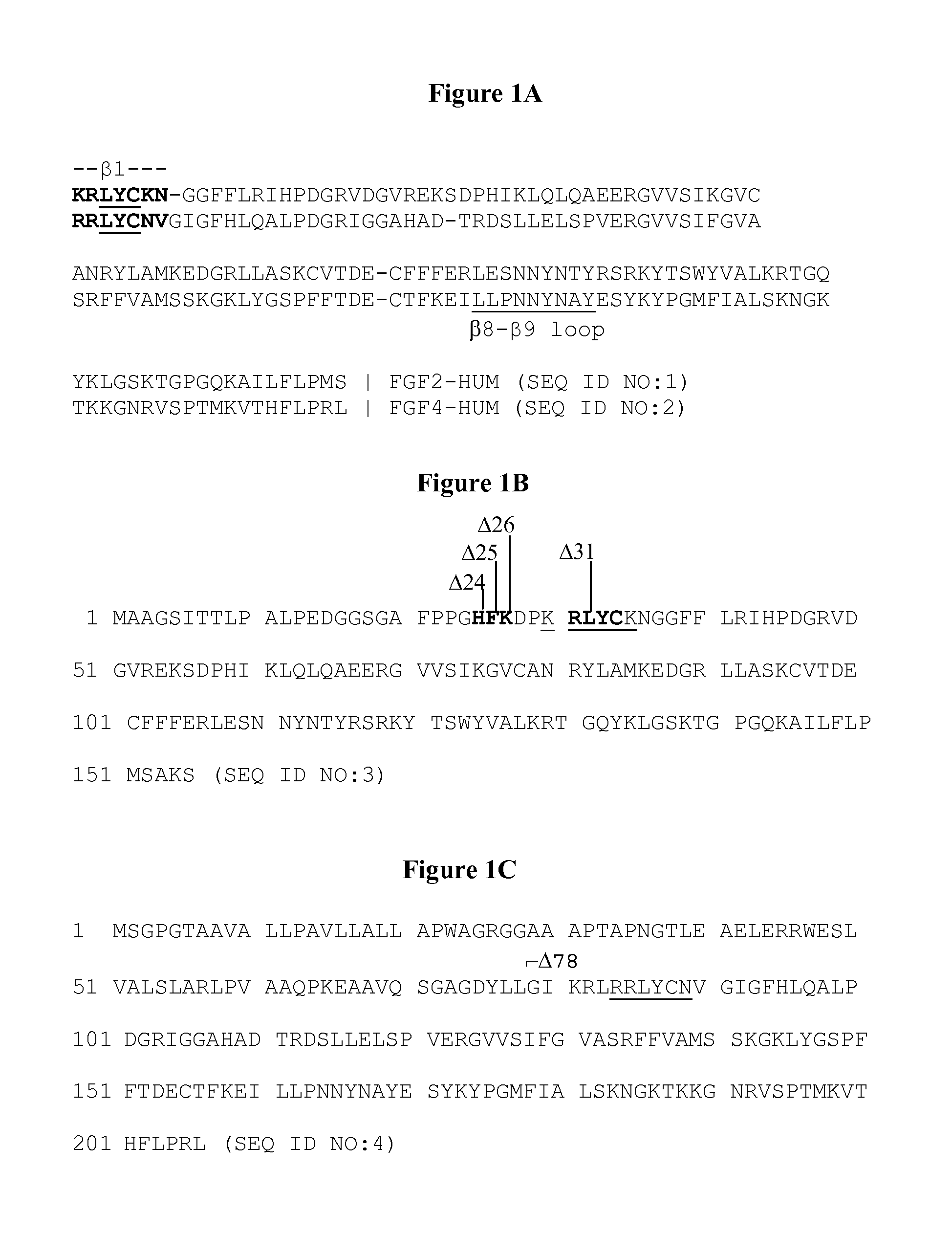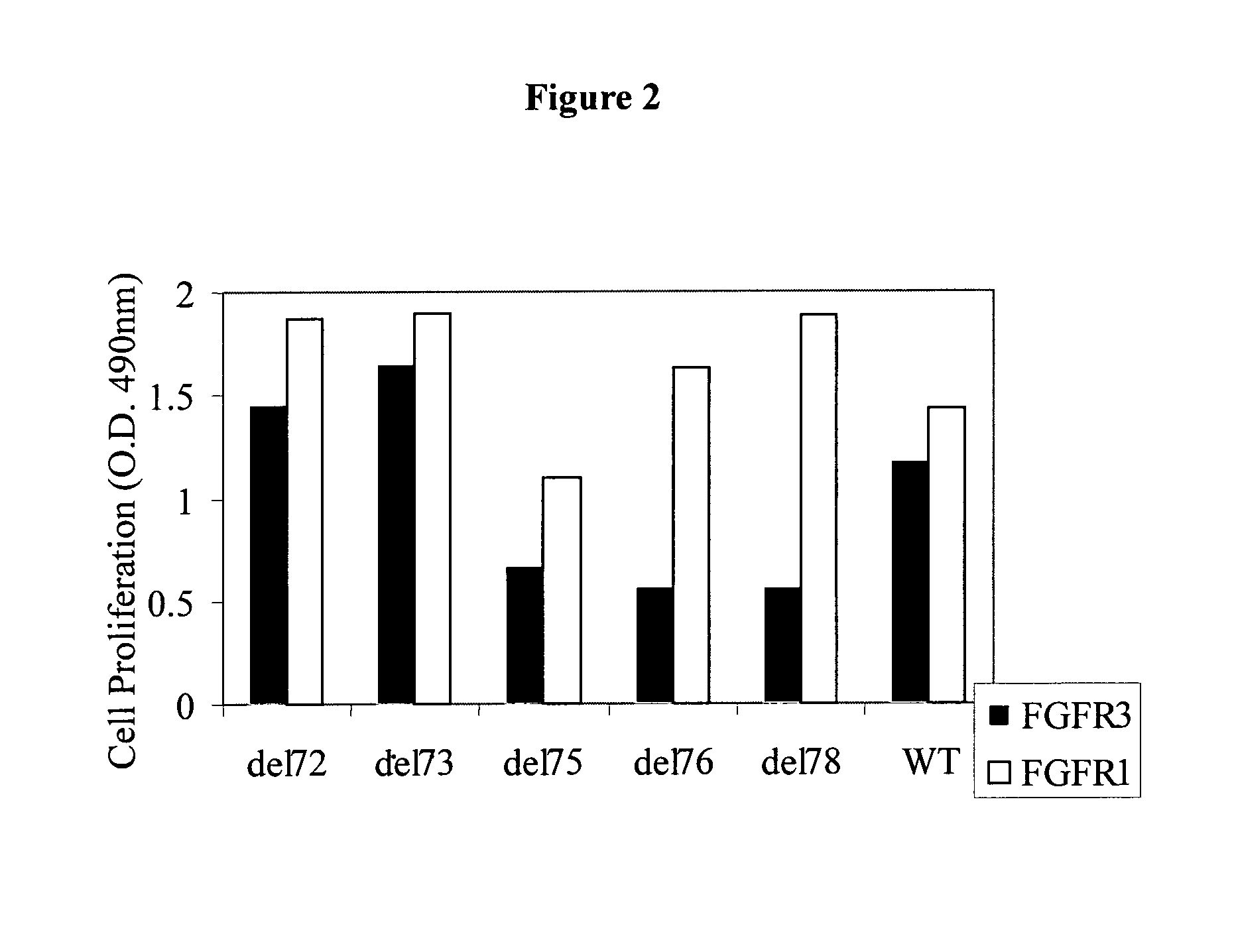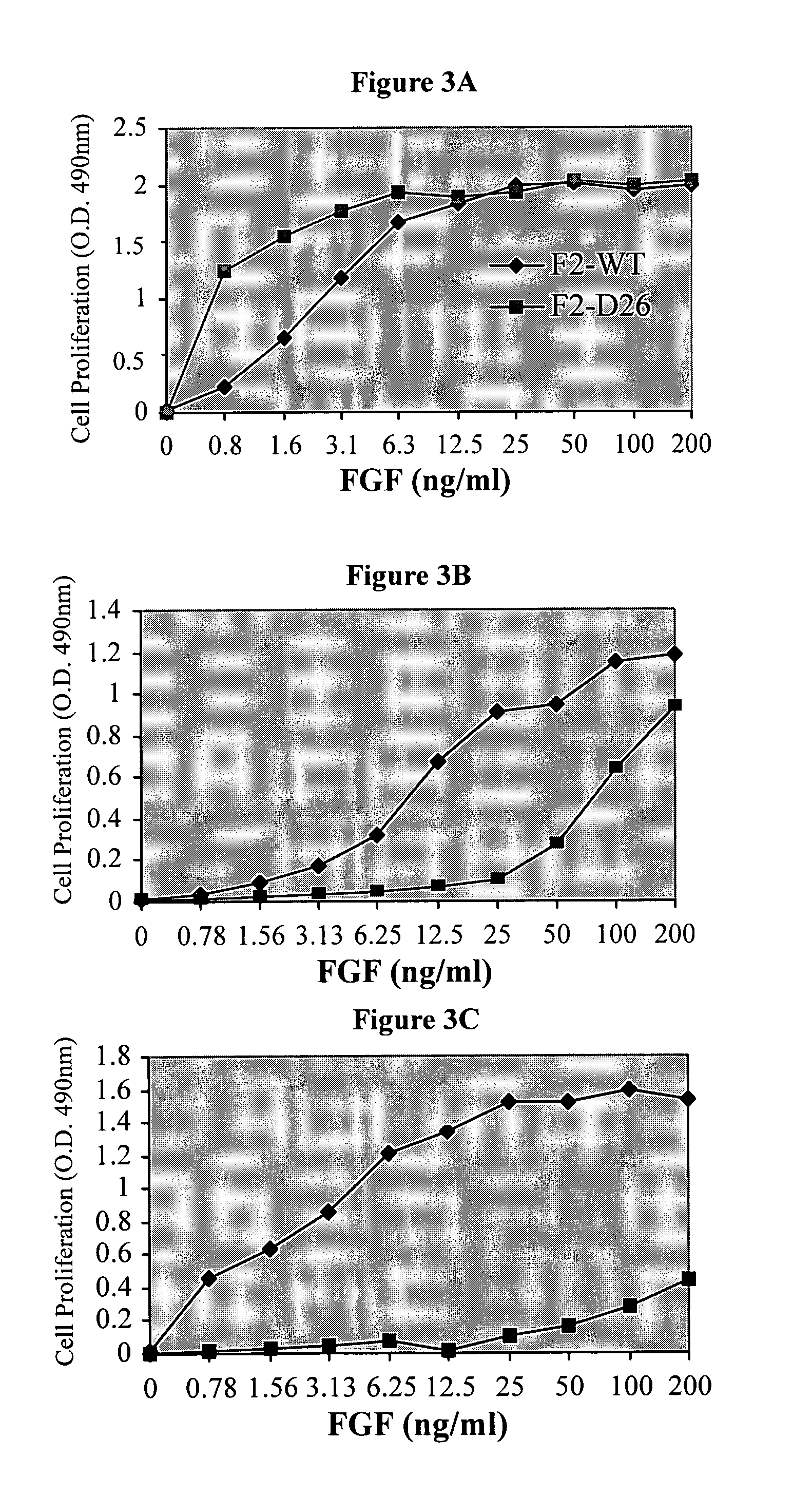FGF-2 variants having N-terminal deletions and increased receptor selectivity and uses thereof
a technology of fibroblast growth factor and variants, which is applied in the field of fgf-2 variants, can solve the problems of the binding of receptors, reducing the synthesis of dna, and reducing the repair efficiency of tissue, and achieves the effect of increasing the selectivity of receptors
- Summary
- Abstract
- Description
- Claims
- Application Information
AI Technical Summary
Benefits of technology
Problems solved by technology
Method used
Image
Examples
example 1
Preparation of FGF Polynucleotide and Polypeptide Variants
[0166]The FGF variants were prepared by standard PCR amplification and cloning into a p89BS expression vector. The details of the vector are disclosed in PCT publication WO 02 / 022779, of some of the inventors of the present invention. The vector has unique NdeI-BamHI restriction sites and the PCR-generated DNA fragments encompassing the coding region of a number of proteins and variants were produced having NdeI and BamHI sites at the 5′ and 3′ ends respectively. The polynucleotide fragments encoding the proteins were ligated into digested p89BS and the plasmid was used to transform E. coli cells, such as JM109, TG1, TG2, DHα, and XL1blue, using standard transformation protocols.
[0167]The primers used for construction of the variants are shown in Table IV, herein below.
[0168]
TABLE IVforward and reverse primers used in preparation of the FGF2 and FGF4 polynucleotide variants of the present invention.Poly-nule-otideSEQIDNO:Forw...
example 2
FGF Variant Binding to FGFR-Transfected FDCP Cell Lines
[0170]The FDCP cell line is a murine immortalized, interleukin 3 (IL-3)-dependent cell line of myelocytic bone marrow origin that does not express endogenous FGF Receptors (FGFR). Upon transfection with FGFR cDNA, the FDCP cell line exhibits a dose-dependent proliferative response to FGF that can replace the dependence on IL-3. FGFR transfected FDCP cells can therefore be used to screen variant FGFs for specific inhibitors, activators or for FGFR signaling. FDCP cells response to various ligands is quantitated by a cell proliferation assay with XTT reagent (Cell Proliferation Kit, Biological Industries Co.). The method is based on the capability of mitochondrial enzymes to reduce tetrazolium salts into a colorogenic compound, which can be quantitated and is indicative of cell viability.
[0171]Specifically, FDCP cells stably expressing FGFR4, FGFR3-IIIc, FGFR3-IIIb isoforms, FGFR2IIIc or FGFR1IIIc were grown in “full medium” (Isco...
example 3
Effect of Variants on Growth Arrest of RCS Chondrocytes
[0173]RCS is a rat chondrosarcoma derived cell line expressing preferentially high levels of FGFR2 and FGFR3 and low levels of FGFR1. In this cell line, FGFR functions as an inhibitor of cell proliferation similar to its expected role in the achondroplasia phenotype. In order to inhibit cell proliferation, the variants have to specifically induce FGFR signal transduction allowing the measuring of FGF affinity and specificity to the FGFRs reflected by the concentration dependence of induced growth arrest.
[0174]The screening was performed on RCS cells in 96 well plates. Cells were seeded at a concentration of about 2,000 cells / well. The following day 10 ng / ml FGF or FGF variants and 5 μg / ml heparin were added to the cells. Positive and negative controls for cell proliferation are included in this assay at the same concentrations as the tested compounds. On the fourth day of incubation, plates were observed under the microscope. If...
PUM
| Property | Measurement | Unit |
|---|---|---|
| concentrations | aaaaa | aaaaa |
| concentrations | aaaaa | aaaaa |
| time | aaaaa | aaaaa |
Abstract
Description
Claims
Application Information
 Login to View More
Login to View More - R&D
- Intellectual Property
- Life Sciences
- Materials
- Tech Scout
- Unparalleled Data Quality
- Higher Quality Content
- 60% Fewer Hallucinations
Browse by: Latest US Patents, China's latest patents, Technical Efficacy Thesaurus, Application Domain, Technology Topic, Popular Technical Reports.
© 2025 PatSnap. All rights reserved.Legal|Privacy policy|Modern Slavery Act Transparency Statement|Sitemap|About US| Contact US: help@patsnap.com



